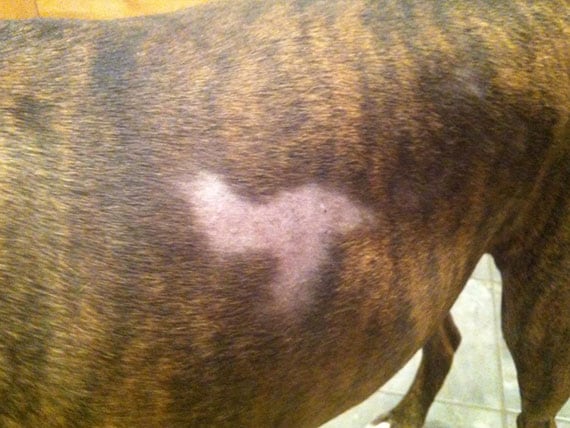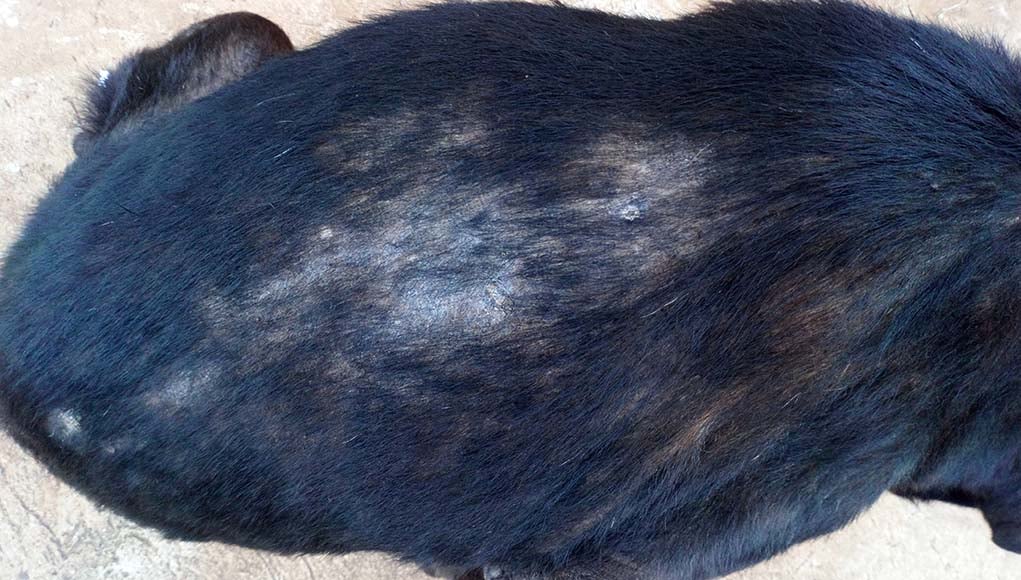Dogs are one of the most popular pets in the world due to their loyalty and friendship to humans. They are always ready to provide comfort and support when we need it the most. However, like us, they too have their problems that can cause worry in their owners. One of the most common and concerning problems is hair loss.
Dog Hair Loss: 5 Reasons Why It Happens and What To Do
Reason 1: Allergies
 Dog allergies are quite similar to human allergies. Many dogs are sensitive to dust, pollen, mold, and certain foods. These allergies can manifest in different ways, including hair loss. If you notice your dog scratching themselves a lot or have red, itchy skin, then they may have allergies. In such cases, it is essential to take them to a vet who can determine the cause of the allergy and prescribe the necessary medication. You can also help by eliminating any allergens in their environment, feeding them a high-quality diet, and grooming them regularly.
Dog allergies are quite similar to human allergies. Many dogs are sensitive to dust, pollen, mold, and certain foods. These allergies can manifest in different ways, including hair loss. If you notice your dog scratching themselves a lot or have red, itchy skin, then they may have allergies. In such cases, it is essential to take them to a vet who can determine the cause of the allergy and prescribe the necessary medication. You can also help by eliminating any allergens in their environment, feeding them a high-quality diet, and grooming them regularly.
Reason 2: Ringworm
 Ringworm is a skin infection caused by a fungus. It can infect the skin of dogs and cause hair loss, redness, and scaly patches. Ringworm can easily spread from one dog to another, and it is also transmissible to humans. If you suspect that your dog has ringworm, you should take them to a vet immediately. Treatment for ringworm depends on the severity of the condition, and it usually involves antifungal medication and keeping the affected area clean and dry.
Ringworm is a skin infection caused by a fungus. It can infect the skin of dogs and cause hair loss, redness, and scaly patches. Ringworm can easily spread from one dog to another, and it is also transmissible to humans. If you suspect that your dog has ringworm, you should take them to a vet immediately. Treatment for ringworm depends on the severity of the condition, and it usually involves antifungal medication and keeping the affected area clean and dry.
Reason 3: Bacterial or Fungal Infections
Bacterial or fungal infections can lead to hair loss in dogs. These infections can occur due to poor hygiene or weak immune systems. Dogs that live in dirty environments or have poor nutrition are more susceptible to such infections. The most common bacterial infection in dogs is Staphylococcal dermatitis, which causes hair loss, redness, and inflammation. Treatment for bacterial or fungal infections involves antibiotics or antifungal medication, depending on the type of infection.
Reason 4: Hormonal Imbalances
 Hormonal imbalances can lead to hair loss in dogs. The most common hormonal imbalance in dogs is hypothyroidism, which is a condition where the thyroid gland does not produce enough hormones. Other hormonal imbalances that can cause hair loss include Cushing's disease and Alopecia X. If you suspect that your dog has a hormonal imbalance, you should take them to a vet who can run diagnostic tests and prescribe the necessary medication or treatment.
Hormonal imbalances can lead to hair loss in dogs. The most common hormonal imbalance in dogs is hypothyroidism, which is a condition where the thyroid gland does not produce enough hormones. Other hormonal imbalances that can cause hair loss include Cushing's disease and Alopecia X. If you suspect that your dog has a hormonal imbalance, you should take them to a vet who can run diagnostic tests and prescribe the necessary medication or treatment.
Reason 5: Parasites
 Parasites like fleas, lice, and mites can cause hair loss in dogs. These parasites can cause severe itching and irritation, which leads to excessive scratching and biting, resulting in hair loss. If you notice your dog scratching themselves a lot, you should check for the presence of parasites using a flea comb. Treatment for parasites involves using flea and tick medication, keeping your home clean and free of parasites, and avoiding areas where parasites thrive.
Parasites like fleas, lice, and mites can cause hair loss in dogs. These parasites can cause severe itching and irritation, which leads to excessive scratching and biting, resulting in hair loss. If you notice your dog scratching themselves a lot, you should check for the presence of parasites using a flea comb. Treatment for parasites involves using flea and tick medication, keeping your home clean and free of parasites, and avoiding areas where parasites thrive.
If you notice that your dog is losing hair, it's crucial to take them to a vet to determine the underlying cause. Early detection and treatment can help prevent the problem from getting worse and ensure that your dog is healthy and happy.
How to Prevent Dog Hair Loss
The good news is that there are many ways to prevent hair loss in dogs. Here are a few tips:
Tips 1: Regular Grooming
Grooming your dog regularly not only keeps them clean but also helps prevent hair loss. Regular brushing can help remove loose fur and distribute natural oils throughout their coat, keeping it healthy and shiny. Additionally, giving your dog a bath regularly can help remove dirt and germs that can lead to infections and hair loss.
Tips 2: Provide a Balanced Diet
Providing your dog with a balanced and nutritious diet is essential for preventing hair loss. A diet that is deficient in essential vitamins and minerals can cause skin problems, which can lead to hair loss. Therefore, make sure that your dog's diet contains high-quality protein, vitamins, and essential fatty acids.
Tips 3: Keep Your Home Clean
Keeping your home clean and free of dirt, dust, and parasites can help prevent hair loss in dogs. Regularly vacuuming carpets and upholstery, washing bedding and toys, and using flea and tick prevention can help maintain a clean and healthy environment for your dog.
Conclusion
Dog hair loss can be a concerning and frustrating problem for dog owners. However, with the right care and treatment, it can be prevented and treated. It's essential to take your dog to a vet if you notice any hair loss so that they can determine the underlying cause and prescribe the necessary medication or treatment. Additionally, by following the tips mentioned above, you can help prevent hair loss and keep your dog healthy and happy. Remember, regular grooming, a balanced diet, and a clean home are essential for maintaining your dog's coat and overall health.
Find more articles about Dogs Hair Loss On Back